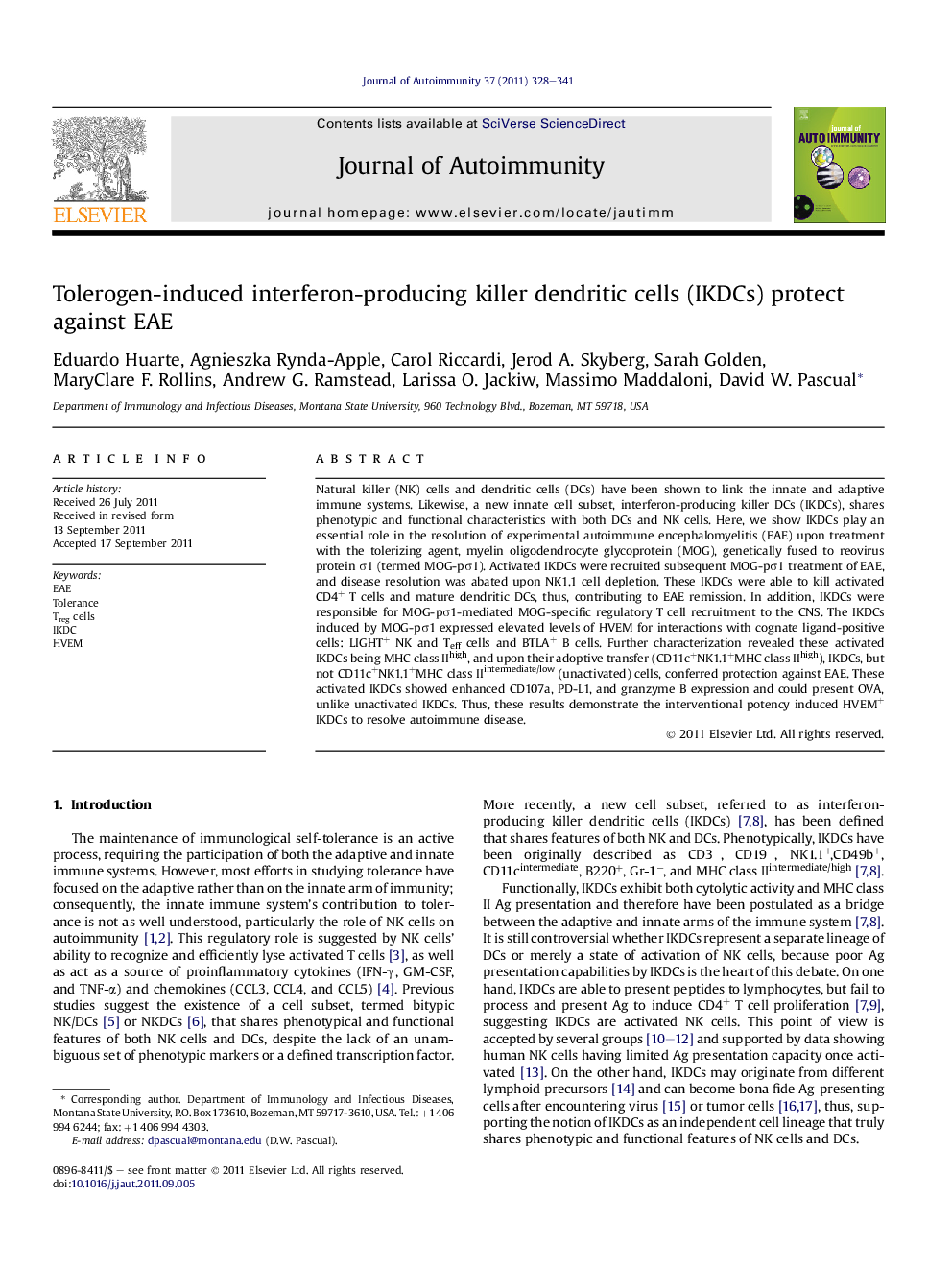| Article ID | Journal | Published Year | Pages | File Type |
|---|---|---|---|---|
| 3367982 | Journal of Autoimmunity | 2011 | 14 Pages |
Natural killer (NK) cells and dendritic cells (DCs) have been shown to link the innate and adaptive immune systems. Likewise, a new innate cell subset, interferon-producing killer DCs (IKDCs), shares phenotypic and functional characteristics with both DCs and NK cells. Here, we show IKDCs play an essential role in the resolution of experimental autoimmune encephalomyelitis (EAE) upon treatment with the tolerizing agent, myelin oligodendrocyte glycoprotein (MOG), genetically fused to reovirus protein σ1 (termed MOG-pσ1). Activated IKDCs were recruited subsequent MOG-pσ1 treatment of EAE, and disease resolution was abated upon NK1.1 cell depletion. These IKDCs were able to kill activated CD4+ T cells and mature dendritic DCs, thus, contributing to EAE remission. In addition, IKDCs were responsible for MOG-pσ1-mediated MOG-specific regulatory T cell recruitment to the CNS. The IKDCs induced by MOG-pσ1 expressed elevated levels of HVEM for interactions with cognate ligand-positive cells: LIGHT+ NK and Teff cells and BTLA+ B cells. Further characterization revealed these activated IKDCs being MHC class IIhigh, and upon their adoptive transfer (CD11c+NK1.1+MHC class IIhigh), IKDCs, but not CD11c+NK1.1+MHC class IIintermediate/low (unactivated) cells, conferred protection against EAE. These activated IKDCs showed enhanced CD107a, PD-L1, and granzyme B expression and could present OVA, unlike unactivated IKDCs. Thus, these results demonstrate the interventional potency induced HVEM+ IKDCs to resolve autoimmune disease.
► IKDCs are recruited to CNS subsequent MOG-pσ1 treatment of EAE mice. ► IKDCs stimulate and recruit activated MOG-specific Treg cells to the CNS. ► IKDCs are able to kill activated CD4+ T cells and mature dendritic cells. ► IKDCs express elevated levels of HVEM, while CD4 T cells and B cells express LIGHT and BTLA. ► Adoptive transfer of MHC-IIhigh IKDCs confers protection against EAE.
